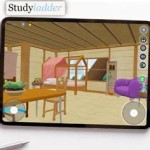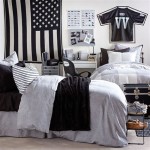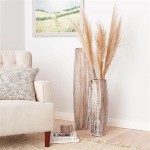Class Decoration Ideas for Grade 8 Science Students
Creating an engaging and stimulating learning environment is crucial for fostering a love of science in Grade 8 students. A well-decorated science classroom can transform a sterile space into an interactive hub, sparking curiosity and improving retention of scientific concepts. The following suggestions provide a range of decoration ideas, grouped by thematic focus, that can be implemented to enhance the educational experience for students.
Visual Aids and Informational Displays
The core of any effective science classroom decoration strategy lies in providing readily accessible visual aids and informative displays. These resources serve as constant reminders of key concepts, formulas, and scientific principles. The implementation of such aids should be carefully planned to avoid clutter and ensure readability.
One particularly useful decoration is a large, well-labeled periodic table. This serves as a fundamental reference point throughout the year, particularly when discussing chemistry. The table should be prominently displayed and easily accessible. Consider using different colors to highlight different groups of elements, such as alkali metals, halogens, or noble gases. Labels should be clear and the font size large enough to be read from anywhere in the classroom.
Another effective visual aid is a series of posters illustrating the different systems of the human body: skeletal, muscular, nervous, circulatory, respiratory, digestive, and excretory. These posters can be commercially purchased or created by students as part of a project. When creating them, ensure that key organs and their functions are clearly labeled. Include diagrams that show the flow of blood, the pathways of nerve impulses, or the processes of digestion and respiration.
Formula charts are invaluable resources for physics and chemistry. Compile a list of commonly used formulas, such as those for calculating speed, acceleration, force, work, energy, density, and pressure. Display these formulas in a prominent location. Consider creating interactive elements, such as flaps that reveal the meaning of each variable in the formula, or QR codes that link to online resources explaining the concepts in greater detail.
Diagrams illustrating the cell structure, both plant and animal, are essential for biology. These diagrams should clearly label all major organelles, such as the nucleus, mitochondria, endoplasmic reticulum, Golgi apparatus, ribosomes, and vacuoles. Comparisons between plant and animal cells should be clearly indicated. Providing 3D models of cells can also be beneficial for enhancing understanding.
Furthermore, consider creating a "Scientist of the Month" display. Each month, feature a different scientist, highlighting their contributions to the field. Include a brief biography, key discoveries, and relevant images. This can inspire students and broaden their understanding of the diversity of scientific careers. Encourage students to nominate scientists and contribute to the display.
Interactive and Hands-On Elements
To foster active learning, incorporate interactive and hands-on elements into the classroom decoration. These elements encourage students to engage with the material in a more meaningful way, promoting exploration and discovery. Interactive displays can transform the classroom from a passive learning environment to an active one.
One effective interactive element is a science-themed bulletin board. Instead of simply displaying information, create challenges and interactive prompts. For example, pose a scientific question each week and encourage students to submit their answers. Or, create a matching game where students have to pair scientific terms with their definitions. Another idea is to create a "What If?" board where students can post hypothetical questions and explore potential answers through research and experimentation.
A living ecosystem, such as a terrarium or aquarium, can be a fascinating and engaging addition to the classroom. Students can observe the interactions between different organisms and learn about ecological principles. For a terrarium, consider including plants, insects, and soil organisms. For an aquarium, choose fish and aquatic plants that are relatively easy to maintain. Assign students responsibilities for the care and maintenance of the ecosystem, fostering a sense of ownership and responsibility.
Create a "Science Demonstration Station" where simple experiments can be conducted. Provide materials such as beakers, test tubes, graduated cylinders, thermometers, magnets, and batteries. Include easy-to-follow instructions for various experiments, such as building a simple circuit, creating a baking soda volcano, or demonstrating the principles of density. Encourage students to explore these experiments during their free time, fostering a spirit of scientific inquiry.
A weather station, consisting of a thermometer, barometer, hygrometer, and rain gauge, can be used to track local weather conditions. Students can record daily observations and learn about the factors that influence weather patterns. Analyze the data collected over time and look for trends. This activity can be linked to discussions about climate change and its impact on the environment.
Consider creating a "Tinker Table" or a designated area for building and creating. Provide materials such as cardboard boxes, tape, scissors, glue, straws, pipe cleaners, and electronic components. Encourage students to design and build their own inventions or explore engineering challenges. This promotes creativity, problem-solving skills, and a hands-on understanding of scientific principles.
Thematic Decorations Aligned with Curriculum
To further enhance the learning experience, align the classroom decoration with the specific topics being covered in the curriculum. This creates a cohesive and immersive learning environment, reinforcing key concepts and making the material more memorable. Thematic decorations should be changed periodically to reflect the current unit of study.
When studying astronomy, decorate the classroom with images of planets, stars, galaxies, and nebulae. Create a model of the solar system, using different sized balls to represent the planets and hanging them from the ceiling. Include information about each planet, such as its size, distance from the sun, and orbital period. Project images of constellations onto the walls using a star projector. Discuss the different types of stars, their life cycles, and the formation of galaxies.
For a unit on genetics, display posters illustrating Punnett squares, DNA structure, and the principles of heredity. Create a family tree chart where students can trace their own genetic traits. Discuss the concepts of dominant and recessive genes, mutations, and genetic engineering. Explore the ethical implications of genetic research and its impact on society.
When studying ecology, decorate the classroom with images of different biomes, such as rainforests, deserts, grasslands, and tundra. Create a food web chart showing the relationships between different organisms in an ecosystem. Discuss the concepts of producers, consumers, and decomposers. Explore the impact of human activities on the environment and the importance of conservation.
During a unit on chemistry, decorate the classroom with models of molecules, atoms, and chemical reactions. Create a display showing the different types of chemical bonds, such as ionic, covalent, and metallic bonds. Discuss the periodic table and the properties of different elements. Conduct experiments to demonstrate chemical reactions, such as the reaction between acids and bases, or the combustion of fuels.
For physics, use decorations to illustrate concepts like motion, energy, and forces. Hang a pendulum from the ceiling to demonstrate simple harmonic motion. Build a model of a lever to illustrate the principles of mechanical advantage. Demonstrate the principles of electricity and magnetism using magnets, batteries, and wires. Conduct experiments to measure speed, acceleration, and force.

20 Of The Best Science Bulletin Boards And Classroom Decor Ideas

Bulletin Board I Made For Mrs Berry S 5th Grade Science Class Scientific Method Ideas Classroom Door Decorations

My Science Classroom

20 Of The Best Science Bulletin Boards And Classroom Decor Ideas

21 Clever Science Classroom Decorating Ideas For Your Door

20 Of The Best Science Bulletin Boards And Classroom Decor Ideas

Science Lab Decoration Ideas For School Bulletin Board Design Classroom

20 Of The Best Science Bulletin Boards And Classroom Decor Ideas

20 Of The Best Science Bulletin Boards And Classroom Decor Ideas

Middle School Science Bulletin Boards Nerdy Board Idea
Related Posts







